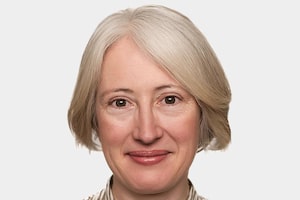In 2006, Alberta became the first province to allow dental hygienists to practice independently. The following year Ontario followed suit, and now dental hygienists are able to work independently of dentists throughout most of the country.Keith Brofsky
In much of the U.S., dental services are monopolized by dentists. Hygienists can provide basic dental care like scaling and polishing, but only if are employed by a dentist.
The libertarian public interest law firm, Institute for Justice, is backing a lawsuit challenging U.S. dental restrictions. The plaintiffs give the case a David and Goliath flavour: Lisa Martinez, former operator of a small teeth-whitening kiosk in Waterford Connecticut's Crystal Mall, versus the Connecticut Dental Association. The lawsuit challenges the Dental Association's right to prevent Lisa Martinez -- or anyone other than a qualified dentist -- from offering teeth-whitening sevices.
The Institute for Justice argues that, even though Ms. Martinez had no dental training whatsoever, her teeth-whitening business was using standard over-the-counter products. If these products are safe for an unskilled person to use at home, why shouldn't they be safe for Ms. Martinez to apply in her little kiosk?
I am not convinced by the Institute for Justice's argument. There is little reason for someone to pay for a teeth-whitening service that is providing nothing more than over-the-counter products. Were Ms. Martinez's customers well informed about the services that she was providing? Moreover, over-the-counter teeth whitening products are safe only when used as directed. Overuse can cause the erosion of tooth enamel and long-term dental problems.
It's one thing allowing people take responsibility for their own teeth. Allowing people to hand over that responsibility to someone with no training at all is another matter entirely. What recourse would a consumer have if something went wrong?
Connecticut's restrictions on dentistry, that prohibit anyone working outside a dentist's office from offering teeth whitening services, are bad regulations. The solution is good regulation -- allowing for more competition -- not abolishing oversight completely.
In Canada, the dentists' monopoly has been broken. In 1995 B.C. became the first province to allow dental hygienists to practice independently, followed by Saskatchewan in 1998. Canadians in the rest of the country had to wait for a decade until Alberta and Ontario followed suit, but now dental hygienists are able to work independently of dentists throughout most of the country.
You could also change the first paragraph from "only if they work under the supervision of a dentist" to "only if they are employed by a dentist." That would be strictly speaking more accurate.
If you have a family dentist and dental insurance, you might not even have noticed. For some, though, the changed dental regulations have made a real difference. According to a 2008 study carried out by the Canadian Dental Hygienist's Association (CDHA), independent hygienists are providing dental care to people in long-term care facilities, and those who need care in their own homes -- people who couldn't afford to pay a dentist to make a house call.
Independent dental hygienists also make dental care more affordable for people without dental insurance. The Ontario Dental Hygienists' Association fee guide recommends that hygienists charge $93.35 for 2 units (up to half an hour) of periodontal treatment (cleaning). Most dentists' offices charge the fees suggested the Ontario Dental Association. Right now that's $104 for 2 units of periodontal work -- or 11 per cent more than an independent hygienist would have charged for exactly the same service.
Yet the biggest impact of independent hygienists could come from having more choice. The federal Competition Bureau encouraged the provinces to allow dental hygienists to open their own practices, maintaining that "Allowing for competition between and among providers of dental hygiene services will promote the efficient, low cost and innovative provision of services."
Unfortunately it is hard to know whether more consumer choice has had a significant impact on overall trends in dental prices. Statistics Canada doesn't have a price index for periodontal treatment like it does for fresh and frozen turkey. Yet a closer look at the provincial dental associations' fee guidelines reveals something interesting. Prices for services provided by hygienists are increasing more slowly than prices for other dental services. In B.C., the price dentists charge for hygienists' services rose by 1 per cent this year. The price of diagnostic services -- something only dentists can provide -- rose by 3.6 per cent. A similar pattern can be found in Ontario, where the fee for getting teeth cleaned in a dentist's office rose by 0.9 per cent in 2011, while the suggested fee for oral surgery rose 6.1 per cent.
The Canadian experience with greater dental competition has lessons for the U.S. According to the OECD, the U.S. spent 17.4 per cent of its GDP on health in 2009, compared to Canada's 11.4 per cent -- but an average American's life expectancy is two and a half years less than an average Canadian's. Our cost advantage comes, in part, from governments' willingness to do things like confront dental monopolies.
Eds note: This post has been corrected to say B.C. was the first province to allow dental hygienists to practice independently.
Author's note: My reference for dental fees is here.
Economy Lab, winner of the 2011 Eppy Award for best business blog. Follow Economy Lab on twitter
 Frances Woolley
Frances Woolley